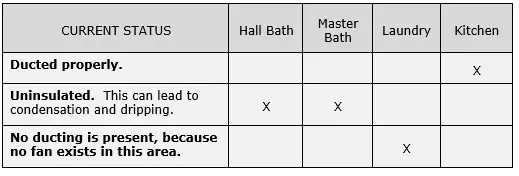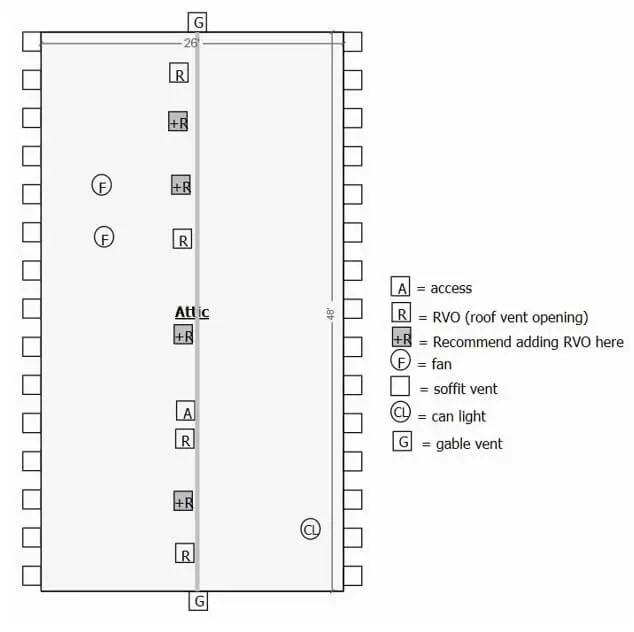Tacoma Recent Attic Mold Inspection Reports
Below are recent inspections of attic mold issues we’ve performed in Tacoma.
Project Type > Attic Mold Inspection for a Home in Tacoma
PROJECT SUMMARY
REASON FOR INSPECTION:
- A home inspector found possible mold growth in the attic. The potential buyers would like to know the cause of the mold growth, its extent and the best course of remediation.
PROPERTY DESCRIPTION:
- This single family 2 level residential property was built in 1972 and is 2124 ft².
CAUSE OF MOLD:
- Warm moist air from the living space is leaking through unsealed penetrations into the attic space. When this air comes into contact with the cold attic sheathing in winter months, it condenses allowing mold to grow. Sealing the attic from the living space and increasing ventilation in the both the attic and in the living space of the house is needed to prevent future mold growth.
JOBSITE PHOTOS
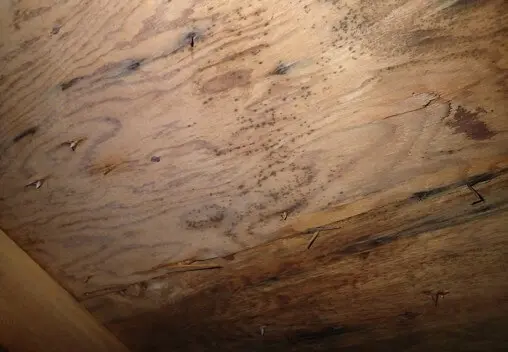
Moderate Mold Growth on Attic Sheathing
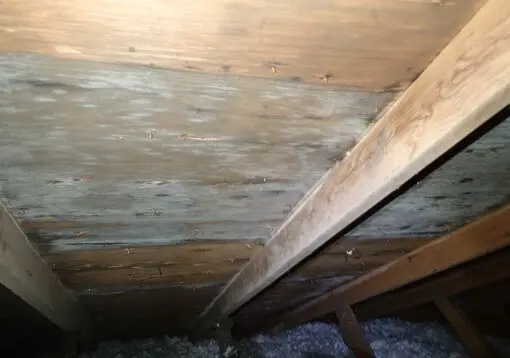
Heavy Mold Growth on Attic Sheathing and Framing
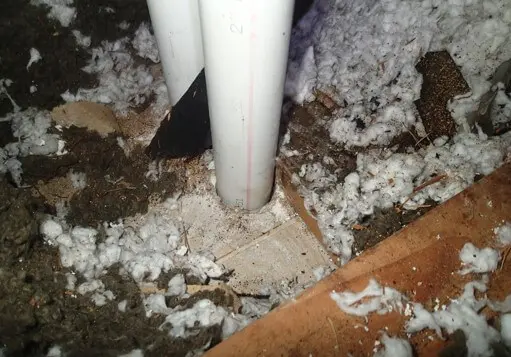
Unsealed Attic Penetrations
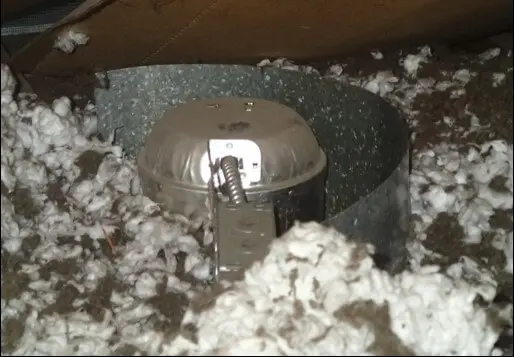
Unsealed Can Light
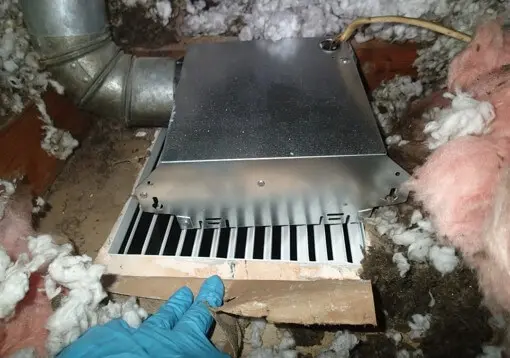
Unsealed Bath Fan
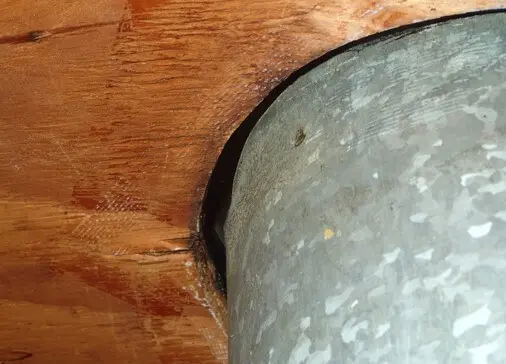
Gap in Fan Ducting
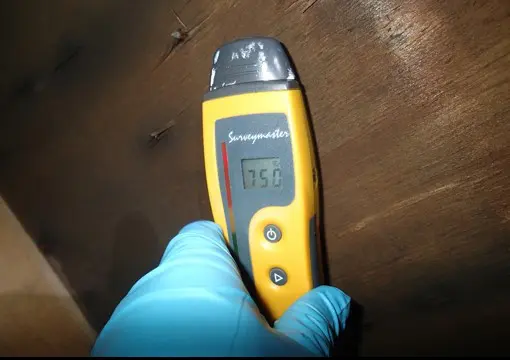
Attic Sheathing Shows Elevated Moisture
OBSERVATIONS
ACCESSIBILITY & HISTORY:
• Fully Accessible. All portions of the attic were accessible at the time of the inspection.
MOLD GROWTH:
SHEATHING:
- Mold Growth – Inspection revealed significant mold growth in the attic. At this time, the mold growth has not lead to significant structural damage of the underlying materials. However, the mold growth may be an indication of a failure of the home to adequately exhaust damp air created by the occupants.
- Mold growth on the roof sheathing does not typically affect the indoor air quality. This is due to the stack effect (warm air rising in a home) which prevents mold spores from migrating downward back into the conditioned part of the house. However, if the attic is used for storage (which is not recommended), or the cold air supply line is not sealed, exposure to the mold spores can still occur.
TRUSSES:
- Mold Growth – Moderate mold growth observed on the trusses and framing in the attic.
SEVERITY AND EXTENT OF THE MOLD GROWTH:
- Heavy mold growth covers approximately 25% of the total attic space.
- Moderate mold growth covers approximately 25% of the total attic space.
- Light mold growth covers approximately 25% of the total attic space.
DISCOLORATION & STAINING:
- Discoloration is present on approximately 65% of the roof sheathing. Discoloration will remain behind even after the mold growth has died and will not fade with time. Therefore, a 2 stage treatment is typically necessary.
MOISTURE & LEAKS:
- Elevated moisture due to condensation currently observed: Elevated moisture levels were noted throughout significant portions of the attic sheathing. The elevated moisture is due to condensation. It is necessary to thoroughly dry the framing and sheathing prior to the application of encapsulant.
INSULATION:
STYLE:
- Blown-in fiberglass
STATUS:
- Mold Observed: Visible mold observed throughout the top layer of insulation in the attic. Mold on the insulation is not a structural concern. Typically, the mold does not grow on the actual insulation, but rather is deposited from the mold growth occurring on the attic sheathing above.
- Low insulation in places. Insulation has been crushed and is likely too low in some areas.
UPPER ROOF VENTILATION:
PITCH:
- Normal pitch.
STYLE:
- RVO style vents installed near ridge. Four RVOs present.
- RVOs are dispersed evenly.
- Gable vents. Two gable vents installed.
DETAILS:
- Insufficient quantity of RVOs. The current quantity of RVOs is not providing sufficient air flow in the attic.
STATUS:
- Contributing to attic mold. Current ridge area venting is insufficient to allow for the adequate ventilation of the attic space. The lack of venting is likely contributing to the condensation and mold growth on the roof sheathing. See 3rd Party Requirements at end of this report.
SOFFIT VENTILATION:
- Proper ventilation is necessary to minimize condensation and subsequent mold growth. All areas of improper ventilation must be addressed to ensure the effectiveness of our process. Current code calls for 1sqft of ventilation for every 300 square feet of attic space, distributed evenly between the ridge and soffit area (i.e. 1sqft of soffit venting for every 600 sqft of upper floor space).
STYLE:
- Bird blocking. Every other bay.
- Continuous exterior soffit vents.
STATUS:
- Adequate. Current soffit ventilation is allowing for adequate amounts of intake air into the attic space.
- Focus on indoor RH and air sealing. Lowering the indoor RH will reduce the quantity of moisture in the air infiltrating into the attic. See the suggestions in the ventilation section below. Additionally, air sealing the ceiling will significantly reduce the movement of humid air from the inside of the home to the attic space. Together, this will likely address the condensation and subsequent mold growth issues on the roof sheathing. If these steps prove insufficient, additional low venting will be required.
AIR SEALING:
OBSERVATIONS:
- Unsealed. The ceiling currently lacks proper air sealing, which can allow excess moisture and heat to escape into the attic area. This air leakage is a key cause of energy loss, attic condensation and mold growth. NOTE: Air sealing was not required by code until recently. Therefore the lack of air sealing does not indicate a failure of the original homebuilder.
STATUS:
- Likely contributing. The lack of air sealing is likely contributing to the condensation and mold growth in the attic. Environix will address this in the bid, below.
CAN LIGHTS:
OBSERVATIONS:
- IC-rated, non-air sealed can light. 1 can light currently installed. This can light is not air sealed. This air leakage is a key cause of energy loss, attic condensation and mold growth. NOTE: Air sealing was not required by code until recently. Therefore the lack of air sealing does not indicate a failure of the original homebuilder.
STATUS:
- Contributing to mold growth. The lack of air sealing around the can lights is a significant contributing factor in the condensation and mold growth on the attic sheathing. Environix will address this in the bid, below.


